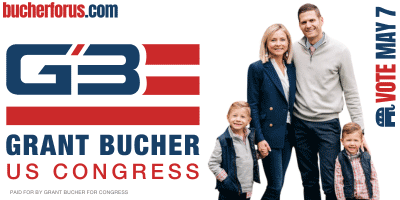U.S. INAUGURAL HISTORY SHAPES PRESENT TRADITIONS
The inauguration of the U.S. president followed many traditions the forefathers set in place dating back to the first inauguration of President George Washington in 1789.
The first inauguration for Washington occurred April 30, 1789, in front of New York’s Federal Hall. Four years later, on March 4, 1793, Washington’s second inauguration took place in Philadelphia, where the government had taken up temporary residence while a permanent capital was under construction.
By March 1801, the U.S. government had moved to Washington, D.C., and on March 4, President-elect Thomas Jefferson became the first president to be inaugurated in the nation’s capital city.
For most of the nation’s history, Inauguration Day was March 4, which was also the final day of the congressional session.
Family members and friends of senators, representatives and both the incoming and outgoing presidents and vice presidents, as well as members of the House, the diplomatic corps, cabinet members and members of the Supreme Court, attended the inauguration and its festivities.
In 1937, Inauguration Day moved to January 20 with the ratification of the Twentieth Amendment of the U.S. Constitution. The amendment’s primary purpose was to reduce the time between the election of the president and Congress, and the beginning of their terms. Originally, both terms began March 4, four months after elections were held. This delay was a practical necessity during the 18th century, when a newly elected official might need several months to put his affairs in order before beginning the difficult journey from his home to the national capital. In today’s world, this period of time is no longer necessary.
The traditions of Inauguration Day progressed through the years adopting practices started during different presidencies. The morning worship service at the beginning of that day became a regular tradition during President Franklin D. Roosevelt’s Inauguration Day, March 4, 1933, and has been followed by presidents ever since.
After the worship service, the president-elect and the outgoing president proceeded together to the Capitol for the swearing-in ceremonies. This tradition began in 1837, when President Martin Van Buren and President Andrew Jackson rode together in a carriage made from wood taken from the USS Constitution. Before then, it was only the president-elect who made the procession. This procession originally began with military companies, bands, the president’s cabinet, elected officials and friends escorting the president-elect to the inauguration.
Once the president has been sworn in, the customary inaugural address is given, a tradition dating back to the first inauguration; and every president since Washington has delivered an inaugural address.
Immediately following the ceremony, the outgoing president quietly left the Capitol.
This tradition began in the early 20th century, though came about because of occasions like the transition between Washington and President John Adams. Several observers noted onlookers paid more attention to Washington than to Adams during Adams’ inauguration in 1798. Eventually, the former presidents would quietly bow out to avoid diverting the spotlight from the new president.
The real festivities began after the swearing-in ceremony. The inaugural luncheon followed the address and then the inaugural parade. The luncheon’s tradition dates as far back as 1897, when the Senate Committee on Arrangements gave a luncheon for President William McKinley and several guests at the U.S. Capitol. Its current form is fashioned after the 1953 luncheon following President Dwight D. Eisenhower’s inauguration. Eisenhower, his wife and fifty other guests of the Joint Congressional Committee on Inaugural Ceremonies dined on creamed chicken, baked ham and potato puffs in the now-restored Old Senate Chamber. These luncheons often feature cuisine reflecting the home states of the new president and vice president.
After the conclusion of the luncheon, the guests of honor and the newly sworn-in president and vice president made their way down Pennsylvania Avenue to the White House, leading a procession of ceremonial military regiments, citizens’ groups, and marching bands.
The early inaugural parades primarily consisted of escorts for the president-elect to the Capitol. The Marine Band began playing during every presidential inauguration parade after Jefferson’s second inauguration in 1805; the first of which occurred in 1809 at the inauguration of President James Madison.
A troop of cavalry from Georgetown escorted Madison to the Capitol. President William Henry Harrison’s parade in 1841 featured floats, and for the first time, military companies from outside the Washington D.C. area accompanied the president-elect as well.
Citizens clubs, political clubs, several military bands and groups of college students also marched in the parade.
Today, the parade is organized by the Armed Forces Inaugural Committee, and participants are selected by the Presidential Inaugural Committee.
On May 7, 1789, one week after the inauguration of Washington, sponsors held a ball to honor the new president. It was not until 1809, however, after the inauguration of President James Madison that the tradition of the inaugural ball began. The inaugural ball quickly turned into an anticipated highlight of Washington society and held its tradition throughout the years. However, instead of just one inaugural ball, many presidents hosted multiple balls to accommodate the number of guests that would attend.
Americans once again heard, “I do solemnly swear [or affirm] that I will faithfully execute the office of president of the United States, and will, to the best of my ability, preserve, protect and defend the Constitution of the United States,” (From the Presidential oath of office, Article II, Section 1, U.S. Constitution).
- Community Invited To Paint Rocks For Urban League Project - April 26, 2024
- The “Bad Guys” In Your Garden & What To Do About Them - April 26, 2024
- Why Voting In The Primary Election Matters - April 26, 2024


